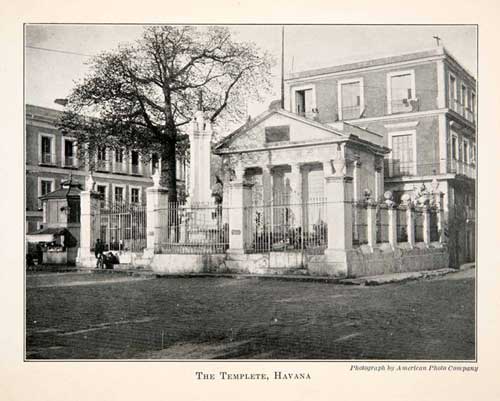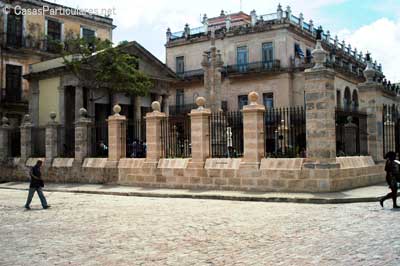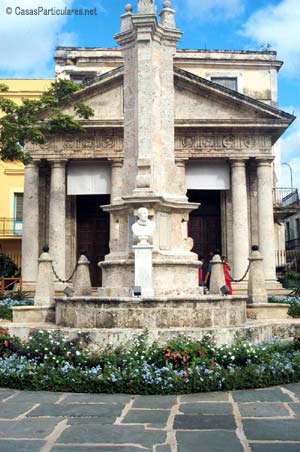El Templete, A Tribute to the Foudation of the Havana City
By Danil Ren, representative of the agency, translated from Spanish by Danil Ren.
El Templete is a little temple located at the side of the Real Force Castle, in the Plaza de Armas Plaza. Its execution is due to the engineer Coronel Antonio María de la Torre under the auspices of the Francisco D. Vives, general captain and the support of the Espada bishop. The monument is surrounded by a little garden, it adopts the shape of a singular doric temple. El Templete measures twelve rods (ancient measurement unit) in the façade, 8.5 in the sides, and 11 in height.
The Templete iron gate weights two thousand livres, the weight of a car, it turns into bronze axis and it is crown by a 5 feet high shield. In the fringe, we can read the following sentence « La siempre fidelísima ciudad de La Habana » (The ever most faithful city of Havana).
In this place, the first mass and chapter of Havana were celebrated and the Templete is the official place of this foundation. Nevertheless, the temple itself was built much later. It was the first neoclassic work in Havana, composed by a doorway carring a decorated frieze and pediment. It was inaugurated on 1828, 300 years later the foundation of the city, in honor of it. Inside, we can appreciate two canvas representing the first mass and chapitre in Havana, you can also see a central canvas - of later painting - which represents the blessing act of the place and the mass. This was painted by the French artist Jean-Baptiste Vermay (whose remainders repose in that same temple).
Outside the temple you can see an ancient column called the Cagigal Column, being this the last name of the Francisco Cajigal de la Vega, gouvernor of Cuba, who made it build in 1754. This column sustain the Nuestra Señora del Pilar Virgin, patron saint of the Spanish navigators.
Inside the enclosure, you can also find a buste of Adelantado Don Hernando de Soto, the first governor of Havana city. Inside the limits of the Templete there is also a buste of Christopher Colomb, the discover of Cuba. And finally, in this same enclosure there is a tree, a ceiba, the only living element of a Cuban monument. According to the history, the first ceiba in the Templete was pulled off by a hurricane. The second one dried and, today, there is a third exemplary. This tree has a simbolic importance in the history of the monument because the Templete involves one of the most famous traditions of Cuba: each November 15, the day before the foundation of the city, thousand of people go to that place, they turn around the ceiba, they lauch a coin and they ask for bliss and luck.
The Templete is one of the symbols of the city, not only because it's the only monument in Cuba having a living element, the ceiba tree, not only because it is related to one of the most importants Cuban traditions, but also because it is a unique architectonic withness, the first neoclassical work in the city and also a relic of the birth of Havana.












